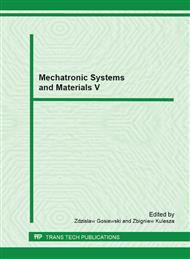p.131
p.137
p.143
p.149
p.155
p.159
p.165
p.170
p.176
Precision Assessment of Surface Coating Roughness Height 3D Parameter St
Abstract:
One of the main surface coating quality indexes of details of mechatronic systems is surface roughness. And the surface roughness is described by surface roughness parameters. Nowadays characterization of surface roughness using three-dimension (3D) methods and parameters become more and more important. This type of surface quality characterization, unlike the two-dimension (2D) methods, provide a more complete view on the surface qualities, since the surface roughness is viewed as a spatial object. Within the last ten years intensive work is being carried out on the development of 3D roughness standards, therefore it is necessary to agree on a unified approach in the assessment of surface roughness 3D parameters. To make possible application of the ISO/DIS 25178 standard being developed one needs information on the determination of 3D surface roughness parameter precision, such as number of measurements, dimensions of measurement areas and their disposition on the measured surface.
Info:
Periodical:
Pages:
155-158
Citation:
Online since:
March 2013
Authors:
Price:
Сopyright:
© 2013 Trans Tech Publications Ltd. All Rights Reserved
Share:
Citation:


